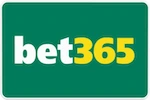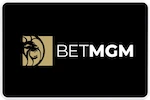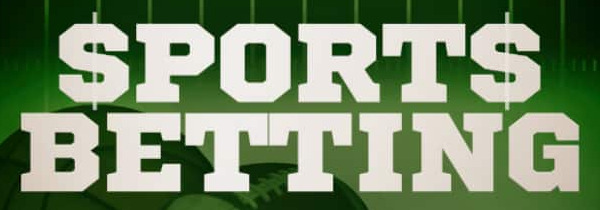When it comes to betting on the NFL, NBA, college football, college basketball, or any other sport with a line based on points or equivalent, it is vital that any bettor possesses a solid understanding of that sport’s point spread to find success. Here, we break down what the point spread is in these sports and how bettors can use it to their advantage when wagering.
What Is a Point Spread?
The function of a point spread is essentially a handicap (a number) placed on one team for betting purposes, designed to give the underdog in any game an equal chance at winning when the point spread is considered. These betting lines are set by online sportsbooks, either in the hope of splitting the amount wagered on each side of a game evenly or to win against bettors whose perceptions of a game may be askew. The spread can also be used in bets like Parlays or Teasers.

What Is Point Spread Betting?
When betting on the point spread you have two options. You can either bet the favorite, meaning taking the team that is favored, and will have a “-” minus sign in front of the number (point spread). The other option is to bet the underdog, meaning you are taking the team not expected to win and getting the points, having a “+” plus sign in front of their number (point spread).
Favorites have points subtracted from their score at the end of a game, while underdogs have points added to their score. The team with the highest score after that handicap is applied to either side after a game is considered the winner against the spread for that matchup. For more on what Betting Against The Spread is, click here.
How Does the Point Spread Work?
When two teams meet on the field or the court, one team is typically better than the other. If all sports bettors had to do was to pick the winning team in a game, they’d all simply wager on the better team and collect their winnings more often than not. Instead, the point spread levels the playing field in many cases between the two teams, creating added intrigue even in games that are expected to be lopsided.
Example: What Does a Spread Of -2.5 Mean?
Using an example from the NFL season, let’s say the Detroit Lions were hosting the Chicago Bears. There was little doubt that Detroit was the better of the two teams; all anyone had to do was look at their records. Detroit was 9-8 on the season, while Chicago was just 3-14. The Lions had already beaten the Bears earlier in the season. So, if all you had to do was pick the winning team, nearly every bettor would have taken the Lions. Instead, the online sportsbooks established a point spread to make both teams equally attractive in the eyes of bettors.
In this case, the Lions were installed as a 2.5-point favorite, commonly designated as Detroit Lions -2.5. The Bears, the underdogs, were written as Chicago Bears +2.5.
If betting the favorite in this example, the Lions had to win by 3 points or more for you to cash your bet. Since the Lions were favored by 2.5 points, you subtracted 2.5 points from their final scoring total for betting purposes. If Lions were to win 24-21, a 3-point margin, Lions bettors would win their wager. Alternatively, if the Lions were to win 21-20, a 1-point margin, Lions bettors would lose, because the Lions didn’t win by 3 or more.
If you bet on the underdog, the Chicago Bears, you won your bet if Chicago won the game outright or if they lost by 2 points or fewer. Because the Bears were the 2.5-point underdogs, you would simply add 2.5 points to their final score for betting purposes.
If the hypothetical spread was 3 points and the Lions won the game by exactly 3 points, 23-20, the result would have been a tie or a push. In this case, no money would’ve changed hands, as your bet would be refunded by the sportsbook you were using.
Where To Bet on Point Spreads
There are several legal sportsbooks in the United States to use to bet on point spreads. Popular options like DraftKings Sportsbook, BetMGM, and Bet365 are all worth having in your repertoire, as each of them offers unique advantages to spread bettors. It is also important to enroll at as many sportsbooks as possible in your state, as this allows you to shop around at each site for the best possible betting lines, maximizing your chances of winning.
Below is a list of sportsbooks worth utilizing for point spread bets. Each comes with its own unique signup bonus, as these sites offer the best sportsbook promos in the business today to start you off with spread betting the right way.






Does Betting on the Point Spread Include Overtime?
Yes, the point spread includes everything that happens in overtime! Point spread betting is based on the final score of the game, whether the game ends in regulation, in multiple overtimes, or somewhere in between.
How Is the Point Spread Made?
A number of sports gamblers, both beginners and veterans, fail to understand the true meaning of the point spread and the thought process that goes into determining the figure for each game. The point spread is not necessarily designed to be a true representation of how much better one team is than the other, though that is sometimes the case. In other cases, it is designed to attract an equal amount of money wagered on both teams. If betting action is even on both sides, sportsbooks are guaranteed a profit regardless of which team covers the spread. For more on this check out our in-depth look at how sports betting odds work.
You may hear that the point spread is designed to create a case where half the gamblers bet on one team and the other half bet on the other. That’s close, but it’s not entirely correct, as not all sports bettors wager the same amount on each game. If a sportsbook receives 50 bets on the Buccaneers for $110 each but receives 50 bets on the Panthers for $330 each, the oddsmaker (the person who sets the spread) hasn’t done a very good job, even though the same number of gamblers are betting on each team.
The sportsbooks are aware that the sharp bettors wager more money than a typical gambler, so the spread is created with these players in mind. This is particularly true in basketball, which doesn’t generate the same amount of money in betting handle as football. In basketball, when the sportsbooks have the sharper bettors on one team and the general public betting on the other side, we could see line movement to account for the difference in gross dollars wagered on one side. Line movement can sometimes come from the volume of wagers, but it is far more often that point spreads move due to the volume of dollars wagered.
One of the most famous stories involving the point spread involves Super Bowl III when Joe Namath and the New York Jets, who were 18-point underdogs, upset the Baltimore Colts. A reporter asked oddsmaker Bob Martin if he was embarrassed about setting that spread. Martin replied that it was one of the best numbers he ever came up with because it split the betting money right down the middle.
Point spread betting generally comes with -110 odds attached to it. This means bettors risk $11 to win $10 with the same proportion no matter the amount of the wager. This is the reason for the oddsmakers attempts to split the betting handle on each team evenly. For example, if a sportsbook receives $33,000 in bets on Team A and $33,000 on Team B, they stand to make $3,000 regardless of which team covers the spread.
Why Do Point Spreads Move?
If one team is receiving a large majority of the dollars bet on a particular game, a sportsbook like BetMGM will move the point spread to try and attract bets on the other team. For example, if the Miami Heat are favored against the spread by 7 points in a game and the vast majority of the money is coming in on Miami, the spread will move upwards, a half point at a time. If moving to Miami -7.5 and then -8 doesn’t stop the bets from coming in on Miami, the spread could move to Miami -9 or higher.
In more rare occurrences, a bettor will be required to risk $115, $120, or possibly more to win $100 when betting with the point spread. This will occur most often in football games when the spread is on one of what are known as the “key numbers.” In football, these are typically thought of as 3, 4, 6, 7, and 10, as teams are much more likely to win by one of those margins than they are by, say, 5 or 9 points. This is due to the nature of football scoring coming most frequently in denominations of 3 points and 7 points.
If the Miami Dolphins are favored by 3 points over the New York Jets and a large percentage of the wagers is coming in on the Dolphins, the sportsbook may be hesitant to move the odds to Miami -3.5 or Miami -4 for fear of receiving too many bets on the Jets. Even if the point spread moved only a half-point, to Miami -3.5, and the bulk of the bets transitioned to the Jets, the worst thing that could happen from the sportsbook’s point of view would be for the Dolphins to win by exactly three points. If they did, the many bettors who had already taken Miami -3 would push their bets, while those who’d taken the Jets +3.5 would win their bets. This would cause the sportsbook to lose a fair amount of money on the game. This is an example of why the odds required on a spread would move before the point spread.
It’s important to note that while odds are based on $100 wagers, there is certainly no requirement to wager that much. Odds of -110 mean risking $110 to win $100. Following suit, -120 means risking $120 to win $100. Just the same, you can risk $11 to win $10 or any denomination you wish, understanding the proportion of risk versus payout will remain the same.
Point spreads can also move due to issues such as injuries, suspensions, and weather. A football team without its starting quarterback or a basketball team without its leading scorer won’t be expected to perform as well without the player as they would otherwise. Severe weather like a driving snowstorm can slow down a high-powered offensive team. These are just a few of countless factors that can create one-sided action and ultimately alter a point spread.
More Sports Betting Guides
- Sports Betting Dictionary, Terminology & Bet Types Meanings
- 4 Tips For Making Successful Bets
- Basketball Betting Guide – How To Bet On Basketball
- What Are First Half and Halftime Bets?
- Parlay Sports Betting
- What Are Prop Bets – How To Bet Proposition Bets
- Pleaser Sports Betting
- Teaser Betting
- Over Under Betting
- Money Line Betting
- What is Against the Spread
- What Does -110 Mean In Sports Betting? Betting Odds Explained
- What is Reduced Juice Betting?
- Bet To Risk vs Bet To Win – Wager Amount vs Risk Amount
- How To Read Rotation Numbers & Sports Betting Odds
- What Is a Progressive Parlay? How To Bet Progressive Parlays
- 3-Way Money Line

